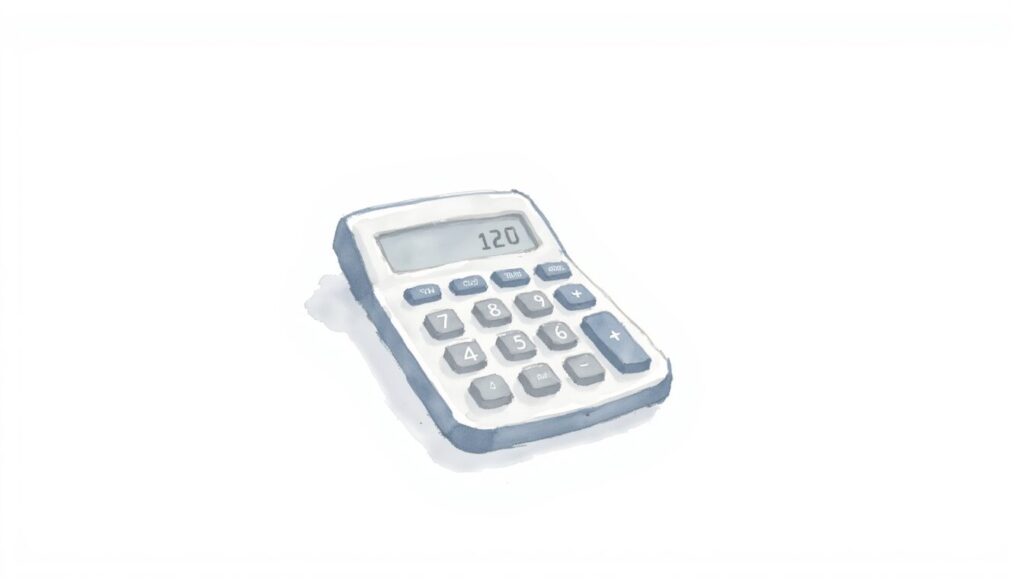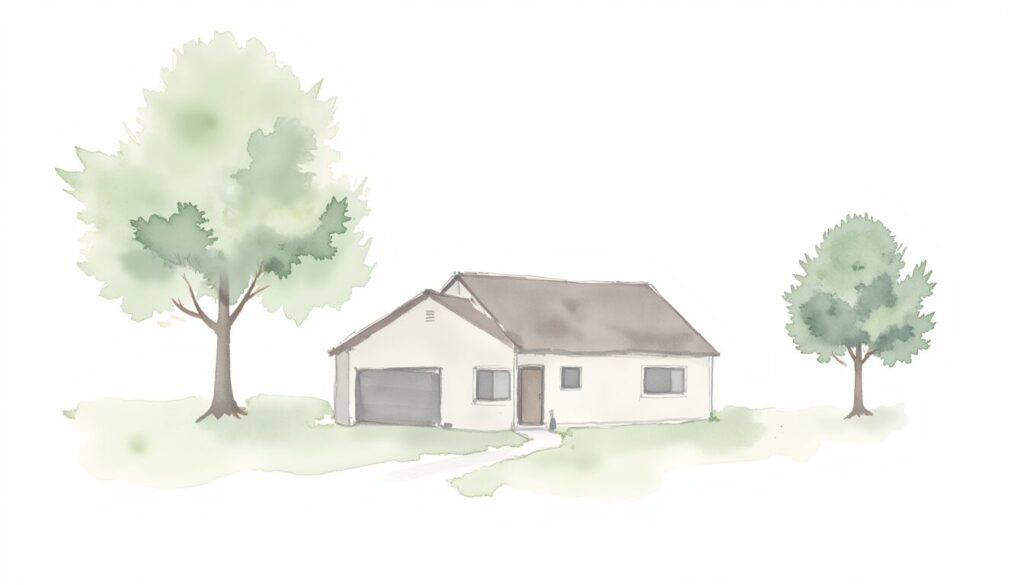Introduction to Replacement cost Estimator

Today’s home insurance coverage relies heavily on precise valuations, making the estimated replacement cost among the most vital tools in your professional toolkit. As construction expenses keep rising and supply chain issues continue reshaping building costs, insurance brokers need to understand these advanced calculation systems to shield clients from catastrophic coverage shortfalls in their property insurance.
The consequences couldn’t be more severe. One miscalculation might leave homeowners confronting hundreds of thousands in personal expenses following a total loss, while insurers face enormous underwriting losses from insufficient premiums. This detailed guide provides insurance professionals with in-depth knowledge about replacement cost estimation methods, hands-on application strategies, and expert approaches for handling complicated valuation situations in home insurance policies.
Understanding Replacement Cost Estimators
Definition and importance
A replacement cost estimator represents a sophisticated analytical system that determines the complete expense needed to reconstruct a structure using current materials, labor rates, and building codes. Unlike market value assessments, these systems concentrate entirely on construction expenses, considering modern construction standards, local permit needs, and regional cost differences.
For insurance professionals, this estimator serves as the cornerstone for dwelling insurance recommendations. The system examines property characteristics, construction details, and location-specific factors to produce accurate reconstruction cost projections. This calculation directly affects policy limits, premium calculations, and insurance claim settlement procedures.
The significance goes beyond basic coverage adequacy. Extended replacement cost provisions, coinsurance clause applications, and guaranteed replacement cost options all rely on precise baseline valuations. When clients encounter covered perils resulting in total loss scenarios, the initial cost estimate often determines whether they can manage to rebuild or face financial ruin.
Types of replacement cost estimators
Insurance professionals work with several different replacement cost estimator categories, each providing unique benefits for specific property types and coverage situations.
Basic Online Tools: These streamlined systems request fundamental property details—square footage, construction year, and general location—to produce rough estimates. While handy for initial assessments, they lack precision for complicated properties or specialized coverage requirements.
Professional Appraisal Software: Advanced platforms include detailed construction databases, current material costs, and sophisticated algorithms. These systems examine architectural plans, interior finishes, and custom features to deliver comprehensive valuations suitable for high-value properties and accurate home insurance coverage recommendations.
Carrier-Specific Tools: Many insurance companies create proprietary replacement cost estimator platforms designed for their underwriting guidelines and claims experience. These tools work seamlessly with policy administration systems and reflect company-specific risk assessment approaches.
Third-Party Valuation Services: Independent firms focus on replacement cost analysis, providing detailed property inspections and comprehensive reports. These services prove beneficial for unique properties, historic structures, or situations requiring expert testimony during insurance claim disputes.
The Role of an Insurance Replacement Cost Estimator

How it impacts policy pricing
The cost estimate directly influences premium calculations through various mechanisms. Dwelling coverage limits, representing the largest component of most home insurance policies, come directly from replacement cost valuations. Higher estimates lead to increased coverage limits and corresponding premium adjustments.
Insurance carriers use sophisticated rating algorithms that examine replacement cost estimates alongside other risk factors. Properties with elevated rebuilding costs face higher premiums not only due to increased exposure but also because expensive homes often feature complex construction methods, premium materials, and specialized systems requiring costly repairs.
Geographic cost variations significantly affect pricing structures. A 2,500-square-foot home in rural Alabama produces vastly different replacement cost estimates compared to an identical structure in coastal California. The replacement cost estimator captures these regional disparities, allowing carriers to adjust premiums appropriately for local building costs and labor rates.
Risk management considerations also link replacement cost estimates to pricing decisions. Properties with higher replacement values often need additional coverage options, such as extended replacement cost provisions or codes coverage, creating opportunities for increased premium revenue while protecting clients from inadequate coverage scenarios.
Common applications in insurance
Insurance professionals use these estimators across numerous scenarios throughout the policy lifecycle. New business applications need accurate valuations to establish appropriate dwelling insurance limits and identify potential coinsurance issues. The home replacement cost calculator helps brokers present clients with evidence-based coverage recommendations backed by objective analysis.
Renewal procedures benefit significantly from estimator applications. Annual inflation adjustments, local construction cost changes, and property upgrades create ongoing valuation challenges. Regular reassessments using updated cost databases protect clients from gradual erosion of coverage adequacy while maintaining competitive premiums.
Insurance claim settlement processes depend heavily on replacement cost estimates to establish coverage limits and determine settlement amounts. When covered loss events occur, the original replacement cost estimate serves as a baseline for adjustment negotiations and coverage adequacy assessments.
Policy modification scenarios frequently need updated valuations. Home additions, significant renovations, and luxury upgrades alter replacement cost calculations, requiring coverage limit adjustments to maintain adequate protection levels in the home insurance policy.
Key Components Influencing Replacement Cost
Building materials and construction methods
Modern replacement cost estimators include detailed material cost databases reflecting current market conditions. Lumber price volatility, steel availability, and roofing materials costs fluctuate significantly based on market dynamics, trade policies, and supply chain disruptions. Advanced systems update pricing information regularly to maintain accuracy in property insurance valuations.
Construction methods significantly affect replacement cost calculations. Traditional stick-built structures present different cost profiles compared to engineered systems, concrete construction, or specialized techniques. The replacement cost estimator tool must account for original construction methods while applying current codes and safety standards.
Regional construction preferences create additional complexity. Some markets favor brick veneer construction, while others predominantly use fiber cement siding or stucco applications. These material choices affect both initial construction costs and long-term maintenance requirements, influencing replacement cost calculations.
Specialized materials require careful consideration. Stone facades, slate roofing, hardwood flooring, and custom millwork command premium prices that generic estimators may undervalue. Professional assessment becomes critical for properties featuring unique materials or artisan craftsmanship.
Property location and local market trends
Geographic location profoundly impacts replacement cost estimates through multiple channels. Local labor costs vary dramatically between metropolitan areas and rural communities, with union requirements, skill availability, and market competition driving significant wage disparities.
Site conditions influence rebuilding expenses beyond basic construction costs. Steep slopes, flood zones, and environmentally sensitive areas require specialized construction techniques, additional permits, and extended timelines that increase total project expenses. The estimator must account for these location-specific challenges, including the property’s foundation type.
Codes and regulatory requirements create regional cost variations. Seismic zones mandate specialized structural requirements, while hurricane-prone areas require impact-resistant windows and enhanced roof attachments. These regulatory fees and compliance costs significantly impact replacement cost calculations and overall expenses.
Market dynamics in local construction industries affect pricing structures. Areas experiencing rapid growth often face labor shortages and inflated material costs, while declining regions may offer more competitive pricing. Seasonal construction patterns also influence estimates, particularly in regions with harsh winters or extended weather disruptions.
Special features and upgrades of the home
Custom features and luxury upgrades represent significant valuation challenges for standard estimators. Swimming pools, wine cellars, home theaters, and elaborate landscaping require specialized knowledge to accurately price replacement costs.
Mechanical systems demand careful evaluation within replacement cost calculations. Modern HVAC and cooling systems, sophisticated security networks, and smart home technology installations carry substantial replacement values often overlooked by basic estimators. Electrical systems upgrades for contemporary power demands add significant costs compared to minimal code compliance installations.
Architectural details and interior finishes create wide valuation ranges. Crown molding, coffered ceilings, marble countertops, and custom cabinetry require premium materials and skilled craftspeople. The replacement cost estimator tool must distinguish between standard contractor-grade installations and luxury specifications when assessing home features.
Energy efficiency features increasingly influence replacement cost estimates. Solar panel systems, geothermal heating, high-performance windows, and advanced insulation systems carry premium installation costs that must be captured in accurate valuations for comprehensive home insurance coverage.
Utilizing a Home Replacement Cost Estimator

Steps to effectively use the estimator
Professional replacement cost estimation requires systematic data collection and analysis procedures. Begin with comprehensive property documentation, including accurate square footage measurements, construction year verification, and detailed feature inventories. Many estimation errors stem from incomplete or inaccurate source information.
Photograph all significant property features, architectural details, and upgrade installations. Visual documentation supports estimate accuracy and provides valuable reference materials for future valuations or claims processing. Pay particular attention to interior finishes, mechanical installations, and exterior construction materials.
Research local costs and labor rates to validate estimator outputs. Contractors, material suppliers, and local officials provide valuable insights into current market conditions affecting replacement costs. This ground-truthing process identifies potential discrepancies in automated calculations.
Compare multiple estimation sources to identify significant variances requiring additional investigation. Professional appraisals, contractor quotes, and insurance company estimates should align within reasonable ranges. Substantial differences signal potential accuracy issues demanding closer examination to ensure proper insurance coverage.
Tools and resources available
Modern estimators range from simple online tools to sophisticated professional platforms. The CoreLogic suite offers detailed property analysis capabilities, while Marshall Swift databases provide comprehensive information for insurance professionals. These tools integrate current construction cost per square foot data with local market adjustments.
Insurance carrier platforms often provide proprietary estimation tools aligned with company underwriting standards. These resources streamline policy writing processes while maintaining consistency with claims settlement procedures. Many carriers offer broker access to advanced estimation capabilities supporting client service objectives.
Professional development resources help insurance professionals maximize estimator effectiveness. Industry associations, continuing education programs, and software training sessions provide technical knowledge and best practices guidance. Regular skills updates prove critical as estimation technologies continue advancing.
Mobile applications and field tools enable property estimates during client meetings or site visits. Tablet-based measurement tools, digital photography systems, and cloud-based calculation platforms support efficient workflow management and improved client service delivery for various policy types.
Challenges in Estimating Replacement Costs
Common pitfalls in assessments
Inaccurate square footage measurements represent the most frequent source of estimation errors. Many properties contain finished basements, attached garages, or covered porches that require careful classification within dwelling coverage calculations. The accuracy depends heavily on precise area calculations using appropriate measurement standards.
Depreciation considerations create ongoing confusion among insurance professionals and clients. While replacement cost coverage eliminates depreciation from claims settlements, the underlying valuation must reflect current construction standards rather than original specifications. Outdated wiring, plumbing, or structural systems require modern replacements that may significantly exceed original installation costs.
Market value confusion frequently undermines replacement cost accuracy. Real estate appraisals reflect land values, location desirability, and market conditions irrelevant to costs. Properties in declining neighborhoods may require expensive reconstruction despite low market values, while prime locations may command high real estate prices for modest structures.
Seasonal cost fluctuations affect calculations, particularly in regions with limited construction seasons. Spring bidding cycles, summer material shortages, and winter weather delays create pricing volatility that generic estimators may not capture. Understanding local construction patterns improves estimation accuracy for property insurance valuations.
How to verify estimated values
Professional validation techniques help identify potential estimation errors before coverage gaps emerge. Obtain contractor quotes for hypothetical rebuilding scenarios, focusing on properties with unique features or construction methods. These real-world pricing references provide valuable calibration data for estimation tools.
Local officials offer insights into permit requirements, inspection procedures, and code compliance costs affecting replacement expenses. Site preparation requirements, utility connections, and regulatory approvals add substantial costs beyond basic construction activities.
Insurance appraisal services provide independent verification for high-value or complex properties. These professionals combine construction expertise with insurance industry knowledge to produce detailed valuation reports supporting coverage recommendations and accurate policy limits.
Claims experience analysis reveals estimation accuracy patterns within your client portfolio. Properties experiencing partial losses provide opportunities to compare actual repair costs with original estimates, identifying systematic over- or under-valuation trends requiring correction in future home insurance policies.
Best Practices for Insurance Brokers

Tips for accurate estimations
Develop standardized property assessment procedures incorporating comprehensive data collection protocols. Create checklists covering architectural features, construction materials, mechanical systems, and custom installations. Consistent methodology reduces estimation errors and improves client service quality.
Maintain current knowledge of local costs, codes, and market conditions. Regular communication with contractors, suppliers, and officials provides valuable intelligence for replacement cost validation. This local expertise distinguishes professional brokers from online comparison tools.
Document all estimation assumptions and data sources supporting coverage recommendations. Detailed records protect against future disputes and provide valuable reference materials for policy renewals or claims situations. Transparency builds client confidence and professional credibility.
Schedule regular property revaluations accounting for inflation, improvements, and market changes. Annual reviews using updated databases maintain coverage adequacy while identifying opportunities for premium optimization. Proactive management prevents gradual coverage erosion that leaves clients underinsured during total loss scenarios.
The insurance industry continues evolving toward more sophisticated risk assessment and coverage solutions. Modern estimators represent powerful tools for protecting clients while managing carrier exposures. Professional brokers who master these technologies deliver superior service while constructing sustainable competitive advantages in an increasingly complex marketplace.
Success requires commitment to ongoing education, systematic quality procedures, and genuine client advocacy. The investment in estimation expertise pays dividends through improved client retention, reduced errors and omissions exposure, and enhanced professional reputation. As costs continue rising and coverage adequacy becomes increasingly critical, these skills will only grow in importance for successful insurance professionals.
When discussing replacement cost value with clients, it’s crucial to differentiate it from actual cash value. While replacement cost value focuses on rebuilding the home with similar materials and quality without deducting for depreciation, actual cash value takes into account wear and tear, potentially leaving homeowners with insufficient funds to rebuild after a covered peril.
Insurance brokers should also educate clients on the importance of regularly updating their home insurance coverage to account for property upgrades, changes in costs, and new home features. This ensures that the dwelling limit remains adequate and the replacement value accurately reflects the current state of the property.
By mastering the intricacies of replacement cost estimation and effectively communicating its importance to clients, insurance brokers can provide invaluable guidance in selecting appropriate policy limits and coverage options. This expertise not only protects homeowners from potential financial devastation but also strengthens the broker’s role as a trusted advisor in the complex world of property insurance.
Frequently Asked Questions
Online replacement cost estimators provide a useful baseline, but their accuracy can vary significantly depending on the quality of input data and whether local construction costs and home features are properly factored in.
Insurers consider square footage, construction materials, labor costs, home features, location, local building codes, and inflationary trends when calculating replacement cost.
To keep your estimate current, review it annually and after any renovations, using updated building cost data and verifying property details with your agent or insurer.
Replacement cost reflects what it would actually cost to rebuild your home after a loss, whereas market value may include land and fluctuate with the real estate market, making it less relevant for insurance purposes.

